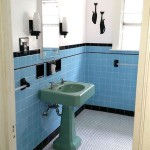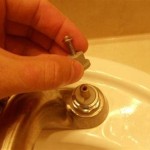How To Install A Wall Bathroom Exhaust Fan
A bathroom exhaust fan is a crucial component for maintaining air quality and preventing moisture buildup. Excess humidity can lead to mold growth, damage to paint and wallpaper, and general discomfort. Installing a wall-mounted bathroom exhaust fan offers a relatively straightforward solution for improving ventilation, as long as proper planning and safety measures are observed. This article provides a comprehensive guide to installing a wall bathroom exhaust fan, covering necessary preparations, step-by-step instructions, and important safety considerations.
Planning and Preparation: Assessing Your Needs and Gathering Supplies
Before commencing the installation process, careful planning is essential. This stage involves determining the appropriate fan size, selecting a suitable location, and gathering the necessary tools and materials. Neglecting these preliminary steps can lead to complications and suboptimal performance of the exhaust fan.
Calculating Fan Size (CFM): The required airflow capacity of the exhaust fan is measured in Cubic Feet per Minute (CFM). To determine the appropriate CFM for the bathroom, calculate the square footage of the room by multiplying its length by its width. A general rule of thumb is to provide at least 1 CFM per square foot. For example, a bathroom that is 5 feet wide and 8 feet long has an area of 40 square feet, requiring a fan with a minimum CFM rating of 40. Additional factors, such as the presence of a shower or bathtub, can increase the CFM requirement. A bathroom with a shower or tub should ideally have a fan that provides at least 50 CFM or more.
Selecting the Fan Location: The optimal location for the exhaust fan maximizes its effectiveness in removing moisture and odors. Generally, the fan should be installed as close as possible to the source of moisture, such as the shower or bathtub. However, it should also be positioned away from air supply vents to prevent the fan from simply recirculating air. Wall-mounted fans are typically installed high up on the wall, near the ceiling, to capture rising warm, moist air. Consider the availability of electrical wiring and access to an exterior wall for venting when choosing the location.
Gathering Necessary Tools and Materials: Having all the required tools and materials readily available will streamline the installation process and prevent unnecessary delays. The following items are typically needed:
*Bathroom exhaust fan kit (including fan, housing, and grill)
*Screwdriver (both Phillips and flathead)
*Drill with various drill bits (including a hole saw sized for the vent duct)
*Stud finder
*Level
*Pencil or marker
*Measuring tape
*Wire stripper/crimper
*Wire connectors (wire nuts)
*Electrical tape
*Non-contact voltage tester
*Duct tape or foil tape (for sealing vent connections)
*Vent ducting (rigid or flexible – rigid is preferred for optimal airflow)
*Exterior vent cap with damper
*Caulk or sealant (exterior grade)
*Safety glasses
*Gloves
*Ladder or step stool
Step-by-Step Installation: From Wall Preparation to Electrical Connection
The installation process involves several key steps, including preparing the wall, creating the vent opening, installing the fan housing, connecting the ductwork, and completing the electrical wiring. Following these steps carefully ensures a safe and functional installation.
Step 1: Marking and Cutting the Wall Opening: Using the stud finder, locate the wall studs in the area where the fan will be installed. Choose a location that avoids cutting through a stud. Trace the outline of the fan housing onto the wall using the template provided with the fan kit. Double-check the dimensions to ensure accurate cutting. Using a drywall saw or utility knife, carefully cut along the traced outline to create the opening for the fan housing. Exercise caution to avoid damaging any electrical wiring or plumbing that may be concealed within the wall.
Step 2: Drilling the Vent Hole: On the exterior wall, mark the location for the vent hole, ensuring it aligns with the exhaust fan location inside the bathroom. Use the hole saw to drill a hole through the exterior wall for the vent duct. Be mindful of the exterior siding material and use appropriate drilling techniques to prevent damage. After drilling, inspect the hole for any obstructions, such as insulation or framing members, and remove them as necessary.
Step 3: Installing the Fan Housing: Carefully insert the fan housing into the wall opening. Secure the housing to the wall using screws, ensuring it is level and flush with the wall surface. Some fan housings may require additional support brackets or mounting hardware. Follow the manufacturer's instructions for securing the housing properly.
Step 4: Connecting the Ductwork: Attach the vent duct to the exhaust fan housing using duct tape or foil tape. Ensure a tight and secure connection to prevent air leakage. Run the ductwork through the wall to the exterior vent hole. Attach the exterior vent cap to the end of the duct and secure it to the exterior wall. Seal the perimeter of the vent cap with caulk or sealant to prevent water intrusion.
Step 5: Wiring the Electrical Connection: Before proceeding with the electrical wiring, turn off the power to the circuit at the breaker box. Use a non-contact voltage tester to verify that the power is off. Connect the electrical wiring to the fan according to the manufacturer's instructions. Typically, this involves connecting the black (hot) wire, the white (neutral) wire, and the green (ground) wire. Use wire connectors (wire nuts) to make secure connections and wrap each connection with electrical tape for added insulation. Carefully tuck the wires into the fan housing and replace the cover plate.
Step 6: Installing the Fan Grill: Once the electrical wiring is complete, install the fan grill over the housing. The grill typically snaps into place or is secured with screws. Ensure the grill is securely attached and that it does not interfere with the fan blades.
Safety Considerations: Mitigating Risks and Ensuring Compliance
Electrical work poses inherent risks, and following safety precautions is paramount during the installation process. Additionally, ensuring compliance with local building codes and regulations is essential for a safe and legal installation.
Electrical Safety: Always disconnect the power at the breaker box before working with electrical wiring. Use a non-contact voltage tester to confirm that the power is off. Wear safety glasses and gloves to protect against electrical shock and other hazards. If unfamiliar with electrical wiring, seek professional assistance from a qualified electrician.
Ventilation and Airflow: Proper ventilation is crucial for the efficient operation of the exhaust fan. Ensure that the ductwork is installed with minimal bends and obstructions to maximize airflow. Rigid ductwork is generally preferred over flexible ductwork, as it provides better airflow. Properly insulate the ductwork to prevent condensation and heat loss, especially in colder climates.
Building Codes and Regulations: Consult local building codes and regulations regarding the installation of bathroom exhaust fans. These codes may specify requirements for CFM ratings, wiring methods, and venting locations. Obtaining the necessary permits and inspections ensures compliance with applicable regulations and prevents potential issues in the future. Failure to comply with building codes can result in fines and may require the removal and reinstallation of the exhaust fan.
Moisture Prevention: The primary purpose of a bathroom exhaust fan is to remove moisture and prevent mold growth. After installation, regularly inspect the bathroom for signs of moisture buildup, such as condensation on walls and ceilings. Ensure that the exhaust fan is used during and after showers or baths to effectively remove moisture. Consider using a timer switch to automatically run the fan for a set period after use.
Proper Sealing: Correct sealing of all connections is important to prevent air leaks and moisture infiltration. Use duct tape or foil tape to seal the vent duct connections securely. Caulk or sealant should be used to create a waterproof seal around the exterior vent cap. Inspect these seals periodically and reapply as necessary to maintain a tight and effective barrier against the elements.
By adhering to these guidelines, homeowners can effectively install a wall bathroom exhaust fan, improving ventilation, preventing moisture buildup, and enhancing the overall comfort and air quality of the bathroom. While the project is manageable for many DIYers, employing a professional for electrical and ventilation work if lacking experience is always recommended to ensure a safe and code-compliant installation.

How To Install A Through The Wall Exhaust Fan Ask This Old House

Bathroom Vent Fan Through Wall New Install From Scratch

Venting A Bath Fan In Cold Climate Fine Homebuilding

How To Install An Exhaust Fan In A Basement Bathroom Diy Installation Step By

How To Bathroom Exhaust Fan Installation Unboxing

How To Install An Inline Duct Fan

What Parts Do I Need To Install A Wall Mounted Fan S Extractor World

How To Install A Bathroom Exhaust Fan Step By Guide

Air Sealing Bathroom And Kitchen Exhaust Fans Building America Solution Center

How To Vent A Bathroom Fan With No Outside Access I S Co
Related Posts







